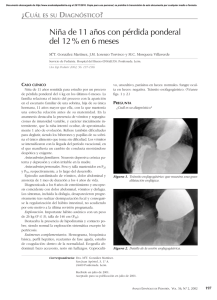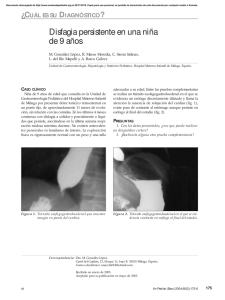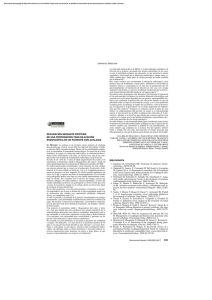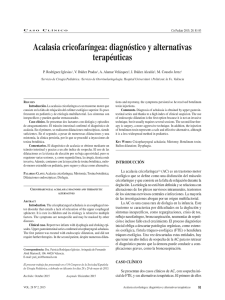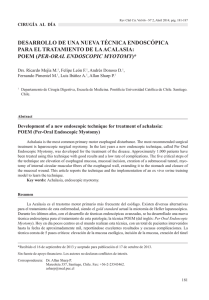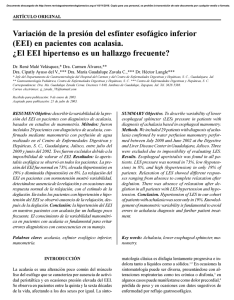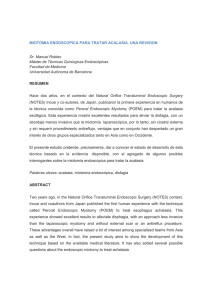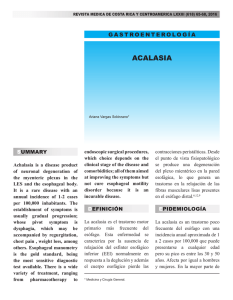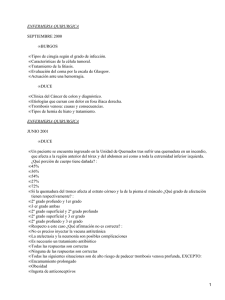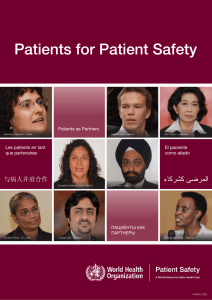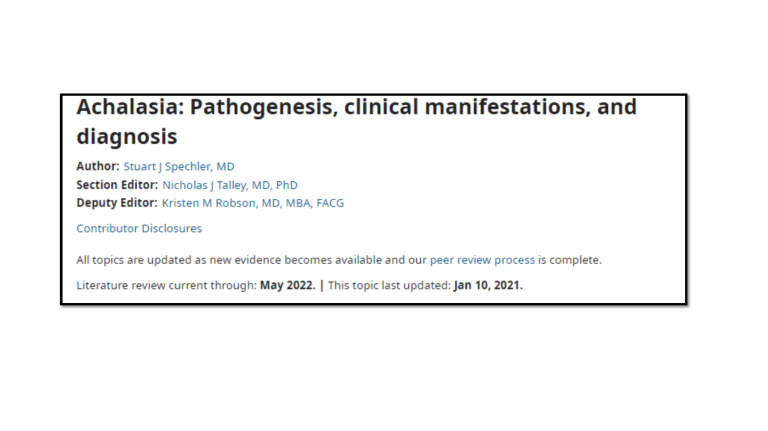
INTRODUCTION Achalasia results from progressive degeneration of ganglion cells in the myenteric plexus in the esophageal wall, leading to failure of relaxation of the lower esophageal sphincter (LES), accompanied by a loss of peristalsis in the distal esophagus. This topic will review the etiology, pathogenesis, clinical manifestations, and diagnosis of achalasia. The management of achalasia is discussed separately. EPIDEMIOLOGY Achalasia has been regarded as an uncommon disorder with an annual incidence of approximately 1.6 cases per 100,000 individuals and prevalence of 10 cases per 100,000 individuals. Although epidemiologic data on achalasia are limited, its frequency appears to be rising, with one study suggesting that, from 2004 to 2014, the incidence and prevalence of achalasia in central Chicago were two- to threefold greater than estimates from earlier years would have predicted. Men and women are affected with equal frequency. The disease can occur at any age, but onset before adolescence is rare. Achalasia is usually diagnosed in patients between the ages of 25 and 60 years. ETIOLOGY The etiology of primary or idiopathic achalasia is unknown. Secondary achalasia is due to diseases that cause esophageal motor abnormalities similar or identical to those of primary achalasia. In Chagas disease, which occurs predominantly in Central and South America, esophageal infection with the protozoan parasite Trypanosoma cruzi can result in loss of intramural ganglion cells, leading to aperistalsis and incomplete lower esophageal sphincter (LES) relaxation. Other diseases that have been associated with achalasia-like motor abnormalities include amyloidosis, sarcoidosis, neurofibromatosis, eosinophilic esophagitis, multiple endocrine neoplasia type 2B, juvenile Sjögren syndrome, chronic idiopathic intestinal pseudo-obstruction, and Fabry disease. PATHOGENESIS Achalasia has been assumed to result from inflammation and degeneration of neurons in the esophageal wall. The cause of the inflammatory degeneration of neurons in primary achalasia is not known. The observations that achalasia is associated with variants in the HLA-DQ region and that affected patients often have circulating antibodies to enteric neurons suggest that achalasia is an autoimmune disorder . CLINICAL FEATURES Achalasia has an insidious onset, and disease progression is gradual. Patients typically experience symptoms for years prior to seeking medical attention. In one series of 87 consecutive patients with newly diagnosed achalasia, the mean duration of symptoms was 4.7 years prior to the diagnosis. The delay in diagnosis was mainly due to misinterpretation of typical clinical features. Patients are often treated for other disorders including gastroesophageal reflux disease (GERD) before the diagnosis of achalasia is established Radiographic findings — A plain radiograph of the chest may reveal widening of the mediastinum due to the dilated esophagus. The normal gastric air bubble may be absent due to the failure of lower esophageal esophageal sphincter (LES) relaxation that prevents swallowed air from entering the stomach. EVALUACIÓN DIAGNÓSTICA Enfoque diagnóstico : se debe sospechar acalasia en los siguientes pacientes: ●Disfagia a sólidos y líquidos. ●Acidez estomacal que no responde a un ensayo de terapia con inhibidores de la bomba de protones ●Alimentos retenidos en el esófago en la endoscopia superior ●Aumento inusual de la resistencia al paso de un endoscopio a través de la unión esofagogástrica Manometría esofágica Manometría de alta resolución Manometría convencional Esofagrama de bario Endoscopia superior Trastorno motor del esófago con ausencia de relajación completa del EEI con falta de peristaltismo del cuerpo esofágico. ACALASIA PRIMARIA O IDIOPATICA Virus herpes zoster? ACALASIA SECUNDARIA O CHAGASICA Tripanozoma cruzi Vector de la región: Triatoma infestans 0.5/ 100.000 habitantes > Casos 20-40 años No preferencia de Raza, Sexo América del sur > casos Autoinmune Infecciosa : Virus varicela zoster y virus del sarampión, T cruzi Genética Degeneración primaria Acetilcolina y péptido P Oxido nítrico y VIP DISFAGÍA A SOLIDOS DISFAGÍA A LÍQUIDOS REGURGITACIÓN DIFICULTAD PARA ERUCTAR DOLOR TORÁCICO PERDIDA DE PESO PIROSIS ASPIRACIÓN ESOFAGO DISTAL “cola de ratón” “pico de pájaro” “punta de lápiz” y Escala de Zaninotto ⓝ EEI: 10-45 mmHg Hipertensión EEI > 45mmHg Contracciones esofágicas de baja amplitud <30mmHg IRP en ACALASIA : presión de relajación integrada > = 15 mdsurg.pe Cáncer de esófago Estenosis por Esofagitis Estenosis orgánica Esclerodermia mdsurg.pe mdsurg.pe 50% No Responden al tto COMPLICACIONES: Perforación esofágica. Hemorragia GI Hematoma intramural RGE post (20%) 3.0, 3.5 ,4 cm mdsurg.pe 33% No responde al tto mdsurg.pe Acción aprox 1año NIFEDIPINO DINITRATO DE ISOSORBIDE mdsurg.pe <40 a > 40 a Fracaso Fracaso Fracaso Éxito Éxito Repetir DN Repetir DN mdsurg.pe MIOTOMIA de Heller: ( 4–5 cm esófago distal hasta 2–3 cm cardias) FUNDUPLICADURA: PARCIAL (Toupet o Dor) FUNDUPLICATURA POSTERIOR (TOUPET) (funduplicatura parcial posterior 270°) Esofagitis (irritativa o infecciosa) RGE post cirugía Aspiración Carcinoma esofágico mdsurg.pe
